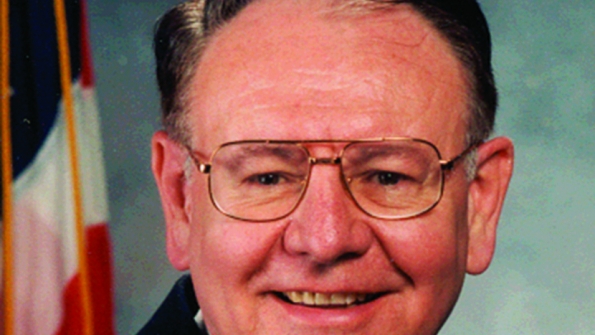FirstNet invites participation in human-factors study that will be crucial to success
By Harlin McEwen, chairman, Public Safety Advisory Committee (PSAC)
Much of the discussion about FirstNet—the nationwide, public-safety broadband network now in development—has focused on technology. However, an extremely important, but often overlooked, aspect of this network is the impact it will have on people. We need to understand how the new network will affect the way law-enforcement, fire and emergency-medical-services personnel carry out their duties every day.
FirstNet must consider human factors and design systems that fit the human body and its cognitive abilities, as well as optimize system performance and productivity. This is crucial in the public-safety environment, where split-second decisions and actions are often essential to save lives and property.
The FirstNet Board has asked the PSAC to analyze the long-range changes that the new network will have on people who use, operate and maintain the network every day. The PSAC believes that the needs of first responders and the individuals who support them, along with the latest technology, must drive network-design decisions.
When FirstNet is operational, public-safety agencies will have the ability to send data, video, images and text and make commercial-grade voice calls. Priority access and greater security and reliability will be key features of the network. These capabilities will provide dramatic improvements over the way we communicate today.
In our current land-mobile-radio environment, we have thousands of disparate wireless systems deployed by local, state and regional entities. The resulting interoperability problems extend across people, as well as technology.
For example, during Katrina and Sandy, public-safety personnel rushing from jurisdictions outside the affected areas to provide mutual aid often needed orientation to local communications terminology and practices. That can cost time, money and lives. With a nationwide network, we can remedy this situation. First, we must develop standardized approaches; then, individuals must be trained to use them. That’s a tall order, but the benefits are well worth the effort.
The PSAC has enthusiastically tackled this assignment from the FirstNet board, and the PSAC executive committee has developed a template to gather data. The template has been distributed to PSAC members, and the plan is to deliver our recommendations to FirstNet this fall, so they can be included in the extensive market research that FirstNet is conducting prior to selecting network technologies.
The PSAC already has divided its initial research into four design categories: devices, applications, policies and procedures and network access/security. We will be investigating the ergonomic needs of users, operators and “maintainers”—those responsible for infrastructure maintenance—in each of these areas. Here are examples of these needs:
Devices
Police officers need devices that can be operated with one hand, and firefighters must use devices while wearing heavy gloves. Emergency medical technicians (EMTs) and paramedics require devices supporting concurrent video, voice and telemetry for transmitting patient data to emergency-room personnel. Network operators—FirstNet and any potential partners—must deliver priority-access capabilities for devices and applications and the ability to provision devices remotely. Those who maintain infrastructure day-to-day need the ability to authorize access to information resources on the fly and remotely activate/deactivate devices, components and applications without user intervention.
Applications
GPS and voice-enabled navigation applications providing turn-by-turn directions to incident scenes can be provided to users. Infrastructure elements must support end-to-end security for delivery and use of sensitive data, such as information from the National Crime Information Center (NCIC), Nlets—the international justice and public-safety network—and state criminal justice information systems. Maintainers want applications and data sources to incorporate criteria for authorizing use by local, regional, state, multistate and/or nationwide entities.
Policies and Procedures
Documentation, training and exercise doctrines must be developed for users working with new devices, applications and data sources. FirstNet will need to define and offer high availability, prioritization, quality-of-service (QoS), redundancy and resiliency.
In addition, memoranda of understanding and service-level agreements must be developed for operating partners, whether they are commercial or governmental entities. Maintainers will need operating procedures for the life cycle of devices, applications and data sources.
Access (Security)
One of the key ways that FirstNet will be differentiated from commercial networks is in the area of security. Ubiquitous, end-to-end authenticity and confidentiality of information traversing the network will be crucial for users, operators and maintainers.
There are many examples of excellence in specific public-safety agencies around the country. We will leverage this knowledge of human factors as we develop a nationwide vision and strategy. When FirstNet launches, we want to ensure that it works better than anything we have today for our emergency responders.
I invite Urgent Communications readers to provide their ideas and recommendations to their PSAC representative or directly to the PSAC at [email protected].
The law creating FirstNet required that its Board establish a standing Public Safety Advisory Committee to assist it in carrying out its duties and responsibilities. Harlin McEwen serves as chairman of this committee. He is also chairman of the communications and technology committee of the International Association of Chiefs of Police. Now retired, McEwen previously served as police chief for the city of Ithaca, N.Y., and as FBI deputy assistant director in Washington, D.C.















